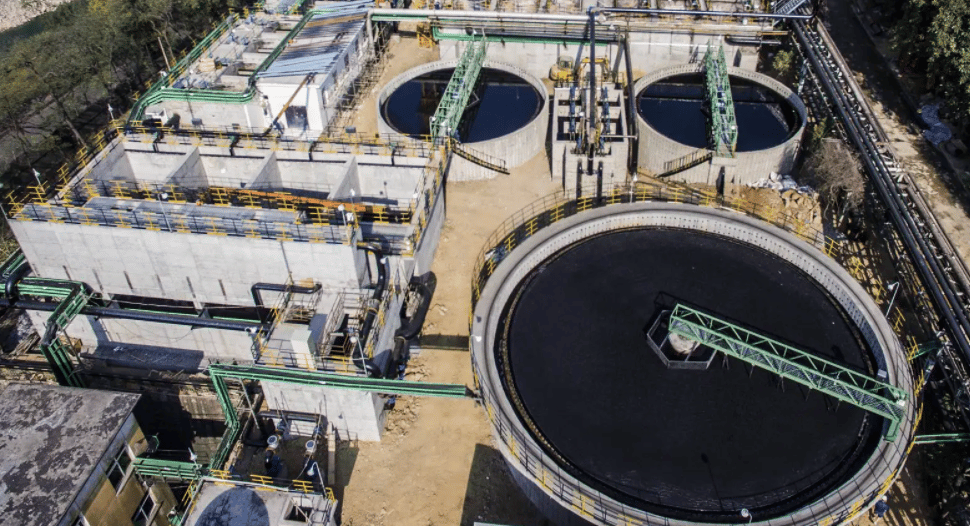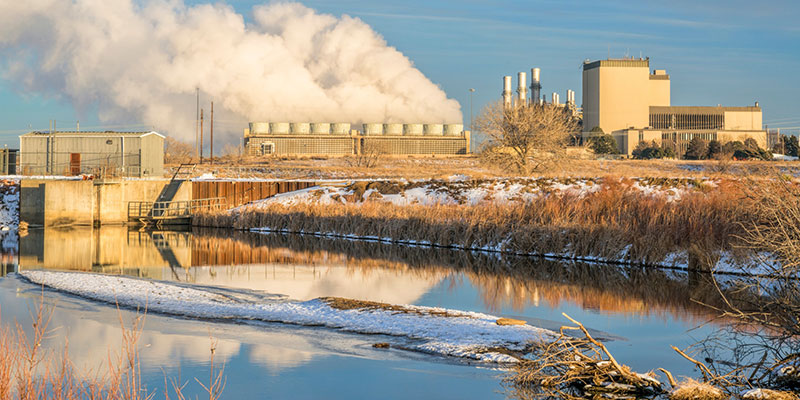Industrial Waste Water Treatment-- Lasting Solutions for Industrial Water Management
Advancements and Advancements in Industrial Waste Water Therapy Technologies
The landscape of commercial wastewater therapy is going through a transformative shift, driven by innovations that enhance both performance and sustainability. Emerging modern technologies, such as membrane layer bioreactors and microbial fuel cells, are redefining impurity removal processes while adding to power generation. Additionally, source healing methods are getting traction, lining up with circular economic situation principles. As regulatory criteria develop, the integration of AI and equipment learning right into wastewater management systems guarantees to make certain and streamline operations conformity. Nonetheless, the full implications of these improvements elevate crucial concerns concerning their scalability and lasting influence on industry methods.
Introduction of Drainage Treatment Technologies
Wastewater treatment technologies encompass an array of approaches made to eliminate pollutants from industrial effluents before their launch into the environment. These technologies are critical for keeping environmental balance and guaranteeing conformity with ecological guidelines. The primary groups of wastewater therapy include physical, chemical, and organic techniques, each serving distinct objectives based on the nature of the contaminants existing.

Organic therapy methods utilize microbes to weaken organic matter, making them especially reliable for organic-rich effluents. Strategies like activated sludge and biofilm reactors harness the natural destruction capabilities of bacteria, causing considerable reductions in biochemical oxygen demand (BOD)
Advanced Filtration Techniques
Advanced filtration strategies represent a crucial evolution in the realm of industrial wastewater treatment, enhancing the performance of impurity elimination processes. Industrial Waste Water Treatment. These techniques include a series of modern technologies, including microfiltration, ultrafiltration, nanofiltration, and reverse osmosis, which offer sequential obstacles for numerous particle sizes and chemical frameworks
Microfiltration and ultrafiltration make use of membrane layer systems to get rid of suspended solids, bacteria, and bigger organic particles, enhancing the top quality of effluent prior to additional treatment. Nanofiltration bridges the gap in between ultrafiltration and turn around osmosis, successfully eliminating natural substances and divalent ions, therefore minimizing the load on downstream processes.
Reverse osmosis supplies the highest degree of purification by permitting just water and little molecules to pass via its semi-permeable membrane layers, making it suitable for recovering top quality water from commercial effluents. Current developments in membrane modern technology, including the development of even more resilient and fouling-resistant products, have significantly boosted operational performance and minimized costs.
Including these sophisticated purification methods not only improves the overall therapy process however also adds to sustainability initiatives by enabling water reuse and source recuperation in industrial setups. (Industrial Waste Water Treatment)
Biological Treatment Innovations

Furthermore, the growth of engineered biological systems, such as membrane layer bioreactors (MBRs), integrates organic therapy with advanced membrane layer filtering. This integration permits for greater effluent quality and lowered impact, making it suitable for space-constrained commercial centers. Developments in genetically engineered microbes have additionally emerged, improving the biodegradation of particular contaminants, such as drugs and heavy steels, that are typically testing to eliminate.
Additionally, the execution of bioaugmentation techniques, where useful microbes are introduced to boost the existing biological therapy processes, has actually shown appealing lead to boosting treatment efficiency. These advancements collectively indicate a pattern in the direction of more efficient and lasting organic treatment methods that can adjust to the developing intricacies of industrial wastewater streams. As sectors remain to focus on ecological compliance, these biological technologies will play an important role in wastewater administration.

Source Recovery Techniques
In industrial settings, the integration of source healing methods has actually come to be progressively important for boosting sustainability and lessening waste. These methods concentrate on drawing out useful materials and energy from wastewater streams, therefore transforming potential toxins into multiple-use resources.
One noticeable technique is nutrient recuperation, where nitrogen and phosphorus, frequently existing in excess in wastewater, are caught and exchanged fertilizers. This not just lowers environmental influences but likewise provides a circular economic situation service for farming applications. In addition, innovations such as anaerobic food digestion enable the conversion of organic waste right into biogas, a renewable resource source that can counter nonrenewable fuel source use in industrial procedures.
Furthermore, advanced filtering and membrane layer technologies help with the healing of commercial byproducts such as metals and salts. These recuperated products can be rehabilitated right into production processes, decreasing the requirement for virgin sources.
Future Fads in Drainage Management
As industries visit this website progressively prioritize sustainability, the future of wastewater administration is established to undertake substantial transformations. Technological developments, such as synthetic knowledge and maker discovering, will certainly make it possible for extra reliable monitoring and management of wastewater systems. These technologies can predict maintenance needs, optimize therapy procedures, and boost decision-making, inevitably decreasing functional prices and ecological effect.
Additionally, the combination of circular economy principles will certainly play a crucial duty in wastewater monitoring. Industries are anticipated to move towards systems that not just deal with wastewater however likewise recover valuable sources, such as nutrients, water, and power. This shift will decrease waste and advertise the reuse of materials, aligning with international sustainability objectives.
Emerging therapy methods, such as membrane bioreactors and progressed oxidation procedures, will further boost the efficiency of wastewater treatment, permitting for greater quality effluents ideal for reuse. Furthermore, regulatory click here for more info structures are likely to evolve, stressing stricter criteria for wastewater discharge and motivating industries to take on innovative therapy services.
Conclusion
In verdict, the evolution of industrial wastewater therapy modern technologies demonstrates a significant shift in the direction of boosted efficiency and sustainability (Industrial Waste Water Treatment). Developments in sophisticated purification strategies, organic treatments, and resource healing techniques highlight the market's dedication to ecological stewardship.
The landscape of commercial wastewater therapy is undertaking a transformative change, driven by innovations that enhance both efficiency and sustainability.Wastewater treatment technologies include a variety of techniques created to eliminate impurities from commercial effluents prior to their launch into the atmosphere.Taking advantage of this post the power of organic procedures has actually led to substantial technologies in the therapy of commercial wastewater.In addition, the execution of bioaugmentation approaches, where valuable microbes are presented to boost the existing organic therapy procedures, has shown promising results in improving therapy efficiency. These technologies jointly symbolize a pattern towards more sustainable and reliable biological treatment methods that can adjust to the progressing intricacies of commercial wastewater streams.